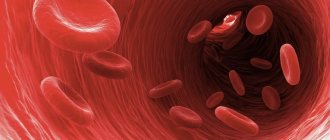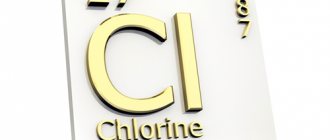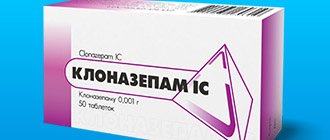30.11.2018
A.A.
(Last update: 07/10/2019)
There are contraindications. Specialist consultation required
Almost every person knows that the ideal pressure levels are 120/80 mm. Hg Art. The first indicator differs from the second by forty units.
Of course, small deviations from these figures are possible, but if there is a large difference between the figures, for example, when the blood pressure is 120 by 50 mm. Hg Art., we can talk about the presence of disorders in the human body.
Description of the problem
Do not self-medicate. Consult a specialist:
Blood pressure has two indicators: upper (systolic) and lower (diastolic), the difference between them should not normally exceed forty units.
Inferior pressure indicates the minimum pressure in the arteries when the heart muscle relaxes. Its indicators are influenced by the resistance of peripheral arteries, their patency, and pulsation frequency. The greater the resistance and the more often the heart contracts, the higher the lower blood pressure readings. They also depend on the activity of the kidneys. This pressure is often called renal pressure.
You get promotional code OZON - 300 points for your first order. OZONAPIE1I (applied in the cart)
If the diastolic pressure is 50 mm. Hg Art., there is a risk of developing arrhythmia, allergies and even heart attack, kidney failure and other dangerous pathologies. Thus, the pressure is 120/50 mm. Hg Art. speaks of the development of a pathological process in the body, so you need to visit a doctor.
In some cases, this blood pressure may occur due to severe stress or emotional distress. But there are also cases of the development of severe kidney pathologies, which are accompanied by such a symptom.
Symptoms
The most striking sign of a decrease in diastolic pressure is fatigue, drowsiness and a dull pain in the head. With a sudden change in body position, your vision may become dark and you may feel dizzy.
Patients experience a feeling of lack of air, nausea and tremors in the hands. This pressure is characterized by numbness of the limbs and pressing pain in the chest.
Neurosis phenomena are often added, such as irritability, rapid mood swings, depression, tearfulness and anxiety.
Why does lower blood pressure decrease?
Low diastolic pressure indicates a decrease in the tone of the heart muscle. Because of this, the blood begins to move more slowly, the brain and internal organs receive insufficient oxygen and nutrients. The reasons for this phenomenon may be different:
- Heart diseases. Often, the unworthiness of this organ, pathologies of the heart valves, and bradycardia can cause a pressure of 120/50 mm. Hg Art.
- Violation of the functionality of the endocrine system. In this case, blood pressure is affected by diabetes mellitus, adrenal insufficiency, hypothyroidism, etc. relaxation of the walls of blood vessels occurs due to a lack of hormones.
- Renal dysfunction. In this case, toxins begin to accumulate, which leads to increased synthesis of renin, which is associated with diastolic pressure.
- Anorexia leads to constantly low blood pressure levels.
- Large blood loss during injury or menstruation, anemia.
- Dehydration of the body as a result of prolonged strength exercise, diarrhea, and the use of diuretic drugs.
- A sharp change in climatic conditions. This is especially true for people with weather sensitivity. Usually after 3-4 days the pressure returns to normal.
- Prolonged stress, nervous tension.
- Heart disease.
- Osteochondrosis.
- Complication of a previous heart attack.
- Oncological diseases.
- Pulmonary tuberculosis, which leads to the destruction of the circulatory system.
- Gastrointestinal pathologies.
- Long-term use of antidepressants.
- Lack of B vitamins, as well as C and E.
- VSD of hypotonic type.
- Astheno-neurotic syndrome.
In some cases the pressure is 120/50 mm. Hg Art. may be caused by lack of sleep, chronic fatigue. In this case, it is necessary to eliminate the provoking factors, and blood pressure will normalize.
There are actually many reasons for a decrease in lower blood pressure values, but most often this signals a disturbance in the functioning of the kidneys. Therefore, when making a diagnosis, this organ is first examined.
What to do at home?
There aren't many options. Isolated hypotension requires competent and comprehensive treatment under the supervision of a cardiologist, and possibly other specialists. The best thing a patient can do is make an appointment with a specialized doctor.
Poor health with isolated hypotension can be relieved by resorting to certain measures.
In case of an acute attack of blood pressure disorders, it is recommended:
- Take a lying position. Bend your legs to provide the brain with enough blood and, accordingly, prevent syncope (fainting).
- Remove constricting clothing from the neck, as well as jewelry. They compress the arteries, preventing blood from circulating normally.
- Watch your breathing. It should be uniform.
- It is important to wet your face with water and apply a cold compress to your head. Especially in the warm season.
- You must eat any salty dish (for example, eat pickled cucumber, etc.)
- It is recommended to drink coffee and tea.
- You can take an aspirin or Citramon tablet. They have a good and safe effect on lower blood pressure, but an increase in systolic readings is likely. We need to be careful.
A lower pressure of 50 means that taking medications is possible. However, they should not be used for a long time; it is dangerous and impractical.
In a situation where the tonometer readings continue to drop, you need to call an ambulance. Such conditions cannot be eliminated at home; in addition, you need to find out what caused them. In the hospital it will be possible to talk about something specific.
There is no talk of any folk remedies. It can only make things worse. In any case, you cannot do without medical help.
Symptoms
Reduced diastolic pressure leads to a deterioration in a person’s well-being. Most often people experience the following symptoms:
- Pain in the head area;
- Nausea, which may be accompanied by vomiting;
- Weakness and absent-mindedness;
- The appearance of spots before the eyes;
- Breathing disorder;
- Numbness of the limbs;
- Pain in the chest area;
- Depression;
- Heaviness in the temples;
- Decreased performance;
- Meteosensitivity;
- Dizziness, loss of consciousness;
- Impaired memory and attention;
- Cardiopalmus;
- Frequent yawning.
Since the pathology is associated with slowing blood flow, a person’s activity decreases. The addition of symptoms of neurosis is also observed.
When diastolic pressure begins to actively decrease, a hypotensive crisis may develop, which is accompanied by weakness, fainting, shortness of breath, and tachycardia. This state lasts for several minutes.
Causes of diastolic hypotension
Reduced heart pressure is considered normal for older people, as degenerative changes lead to a decrease in the elasticity of blood vessels, resulting in a decrease in the volume of circulating blood. During the period of myocardial contraction, less blood is released into the vessels, which puts less pressure on the arterial walls. This is accompanied by a decrease in diastolic pressure.
Low blood pressure may be a sign of the development of the following heart pathologies:
- heart failure;
- aortic heart disease;
- bradycardia.
With these pathologies, the heart muscle pumps an insufficient volume of blood, cardiac output decreases, and peripheral pressure decreases.
Important! A decrease in the lower value, while maintaining the upper one, is very often a sign of the development of an atherosclerotic process against the background of diabetes mellitus.
A decrease in diastolic pressure is also detected in adrenal insufficiency and endocrine diseases.
Taking certain medications can cause a decrease in minimum blood pressure. These include painkillers, sedatives, diuretics and antihypertensives.
Other reasons also lead to a decrease in diastolic pressure:
- loss of large amounts of fluid;
- heavy bleeding;
- severe infectious diseases;
- low levels of glucose in the bloodstream;
- severe allergic reaction.
No ads 1
What is dangerous, what complications can there be?
Pressure 120/50 mm is especially dangerous. Hg Art. for elderly people. It significantly increases the likelihood of developing complications in the functionality of the heart and blood vessels. Low diastolic blood pressure in this case indicates a decrease in the elasticity of the walls of the aorta and large vessels due to atherosclerosis. A large volume of blood enters the human blood vessels, and the walls are deformed or inelastic, which leads to the development of ischemia and a high probability of death.
As a result of numerous studies, it has been proven that low levels of lower pressure contribute to the appearance of Alzheimer's disease, that is, dementia, which is formed due to a disorder in the metabolic processes in the brain.
Such pressure also poses a danger for a pregnant woman, as circulatory and fetal disorders occur, which leads to the formation of placental insufficiency. This phenomenon can cause spontaneous abortion, delayed fetal development, as well as delayed physical and mental development of the child after birth.
Classification of blood pressure levels
Normal, generally accepted blood pressure values are as follows:
- The normal indicator is 120-130 to 80-90. Most common.
- 140 by 90. Upper limit.
- 150 to 100, first degree hypertension.
- 160 to 100-110. Hypertension of the second degree.
- Over 170 to 110 - third degree hypertension.
- Blood pressure below 110 over 90 is a low reading (but not yet hypotension).
- 100 to 70, mild hypotension.
- 90 to 70-60, moderate hypotension.
- 70 to 50, severe hypotension.
Anything below is already critical numbers that can cause death.
First aid
If a person’s blood pressure suddenly drops to 120/50 mm. Hg Art., he needs to lie down so that his head is below the level of his lower limbs. This will improve blood flow to the brain. It is recommended to apply cold to the forehead and massage the neck area. Usually after such events the pressure returns to normal. If blood pressure does not increase, you need to call an ambulance, since a drop in lower pressure can be a signal of the development of serious problems in the body.
Diagnostic measures
In order for a doctor to develop an effective treatment regimen, a person must undergo an examination to determine the causes of low lower pressure. To do this, the doctor interviews the patient and studies the medical history. Then he prescribes the following diagnostic methods:
- Laboratory tests of blood and urine;
- Thyroid hormone test;
- Examination of blood vessels, kidneys, lungs and spine.
After making a diagnosis and identifying the causes of blood pressure fluctuations, treatment is prescribed. Timely examination helps reduce the risks of developing many complications and irreversible consequences.
Therapy
Depending on the diagnosis and examination results, the doctor will prescribe effective treatment. Usually medications are prescribed that help improve the functioning of the cardiovascular system, kidneys, as well as diuretics and sedatives.
For acute hypotension, the doctor prescribes the following medications:
- Drugs that improve blood circulation in the brain increase lower blood pressure;
- Medicines to increase vascular tone and normalize blood circulation throughout the body, for example, Angiotensinamide;
- Medicines with tonic, immunostimulating and neurostimulating effects;
- Vitamins of group B, as well as C and E.
When blood pressure drops, drugs such as Citramon, Pantocrine, and painkillers are often prescribed. In some cases, oxygen therapy becomes effective. It helps improve blood circulation, dilate blood vessels, and normalize heart activity.
In some cases, treatment in a hospital setting may be necessary.
For VSD and astheno-neurotic syndrome, treatment is carried out using tonics; they help increase upper blood pressure, eliminate weakness and lethargy, and apathy. Such medicines include lemongrass and ginseng. The doctor may also prescribe nootropic drugs. They will help normalize blood circulation in the brain and stabilize the emotional state. Such drugs include Pantogam and Phenibut.
To strengthen blood vessels and improve blood circulation, you can take Ascorutin and Quercetin.
In any case, only a doctor should prescribe treatment.
Alternative therapy
For low blood pressure, traditional medicine recommends using remedies such as tea with currant leaves. To prepare it, you need to take one small spoon of black tea and dry crushed black currant leaves. Pour boiling water over the mixture and leave for about fifteen minutes. Drink one glass of tea per day after the main meal.
Chicory root also helps normalize blood pressure. To do this, you need to take two tablespoons of crushed root, add 500 milligrams of water, and simmer over low heat for about half an hour. Take a decoction of one third of a glass three times a day.
The course of therapy with these drugs is at least one month. But before using traditional recipes, it is advisable to consult with your doctor.
Necessary examinations
You need to be examined along several lines at once: cardiological, neurological and endocrine. They do this almost simultaneously.
The diagnosis is made by exclusion, after a thorough examination of various statuses.
At the initial appointment with any specialist, an oral interview begins; this is necessary to establish the symptoms of the process and subsequently compare objective diagnostic data with the patient’s subjective feelings.
Next, an anamnesis of the person’s life is collected. It is necessary to establish the following factors: the presence of bad habits, heredity, brain injuries in the past, etc.
The research itself is very variable and includes the following activities:
- Measuring blood pressure levels. Allows you to establish the fact of its reduction. It is performed several times, on different hands with an interval of 5-15 minutes.
- Daily monitoring. The monitor (automatic tonometer) studies pressure dynamics over a full day. Required in all cases. This is the gold standard for cardiac testing today.
- Electrocardiography. Necessary for assessing the state of the cardiovascular system. If the specialist has sufficient experience, the ECG results will tell him a lot.
- Encephalography. Allows you to assess the state of the nervous system. Stress tests (study of blood pressure dynamics under the influence of physical activity).
- Blood test for thyroid and pituitary hormones (T3, E T4, TSH, cortisol). In the system, the specified measures are enough for an accurate diagnosis. It is possible to expand the list of studies at the discretion of the specialist.
Prevention
In order to prevent low blood pressure, it is necessary to get proper rest, lead a healthy lifestyle, and normalize the period of sleep and wakefulness. If there are no contraindications, you can practice hardening. This will help tone the blood vessels and normalize the activity of the heart. It is also important to engage in moderate strength training. This will make it possible to improve metabolism, activate the activity of all organs and systems, and saturate the body’s cells with oxygen.
Don't forget about proper nutrition. It is recommended to exclude harmful foods from the diet. You also need to avoid stressful situations and nervous tension, and get rid of bad habits. A contrast shower also helps tone blood vessels.
Pulse
When blood pressure is 120, heart rate decreases by 50. For middle-aged people, the norm at this pressure would be 65-70 beats per minute. In people of retirement age, the pulse can be 65-50 beats. If it drops to 50 regularly, you need to undergo a comprehensive examination.
Blood pressure of 120/50 and pulse of 50 can be observed if a person spends a long time in low temperatures. A cold environment causes your body temperature to drop and your heart rate to slow. The body thus saves strength, this is a kind of defensive reaction. As soon as the patient warms up, blood pressure and heart rate return to normal.
A drop in heart rate of up to 50 beats can be observed when reflex zones are stimulated. These areas are the eyeballs and the lower side of the neck. Sometimes a person stimulates them unconsciously. If you measure the pulse of a man who has tied his tie tightly or constantly rubs his eyes, his heart rate will be underestimated.










